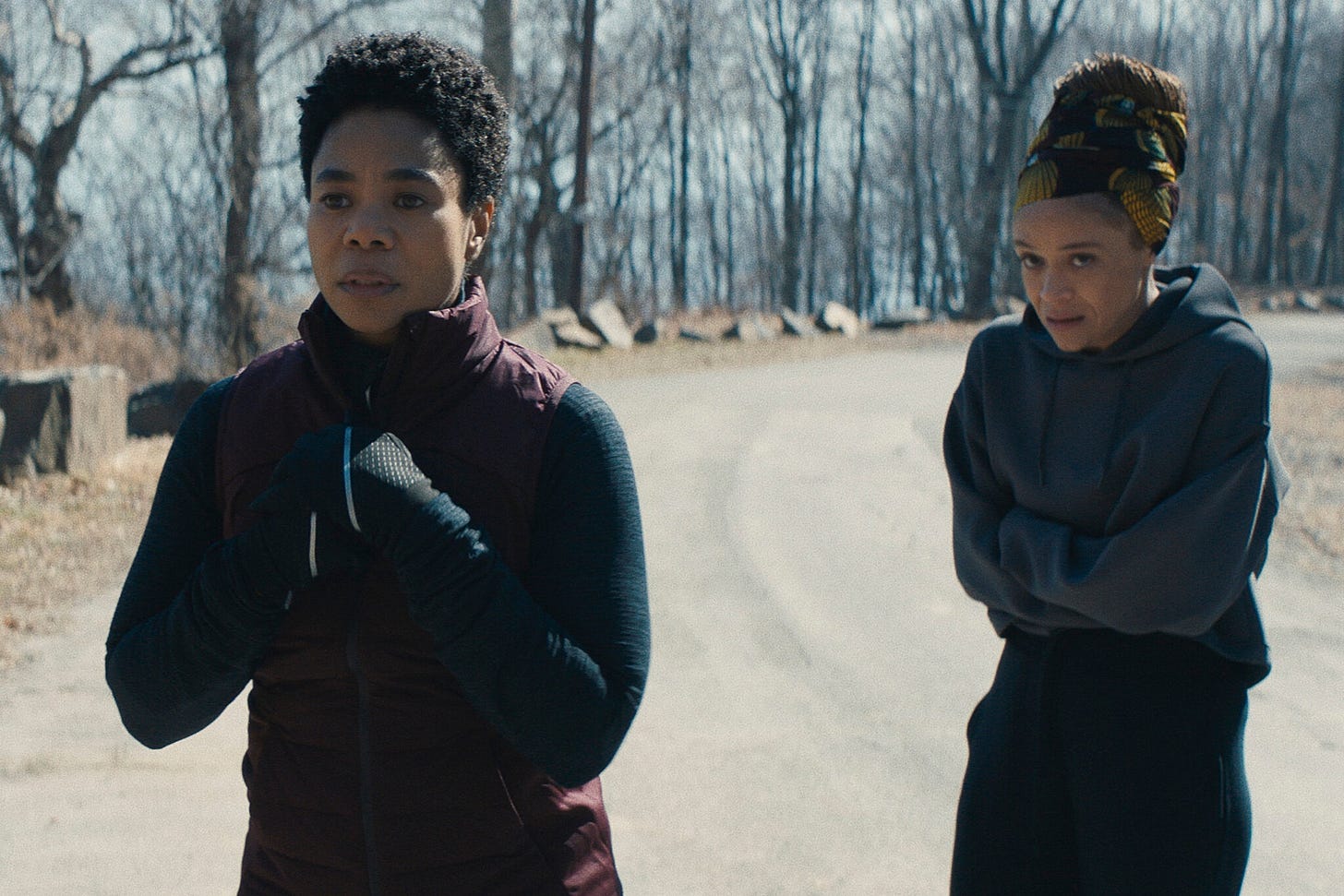Master
"Get Out" goes to college in this atmospheric but derivative horror/drama about an institute of higher learning where very old models of racial debasement linger.
“It’s not ghosts, and it’s not a witch… it’s America. And it’s everywhere.”
Just a very quick review today — I only received the screener for “Master” for very late.
This moody and atmospheric horror/drama from first-time feature film writer/director Mariama Diallo is a parable about racism told from the perspective of a handful of Black characters who exist in a bastion of white privilege: the (fictional) Ancaster College.
(Vassar College in upstate New York stood in.)
Regina Hall plays Gail Bishop, a former student and tenured professor of literature who has recently been made house master of Belleville, one of the stately brick dormitories on campus. It’s an antiquated term for a very old custom of professors getting free room and board in exchange for being a mentor a shoulder to lean on for students.
Her best friend at school, Liv Beckman (Amber Gray), is working to get her tenure while bumping against the older, entirely white department professors.
The new arrival on campus is Jasmine (Zoe Renee), a shy, wan freshman (more old terminology) who is viewed as something of an exotic on a campus with only a handful of Black students. She’s super bright, was valedictorian of her high school in the suburbs, but struggles to fit in.
There’s the vaguely hostile roommate, Amelia (Talia Ryder), and her friends — rich white kids with no concept of what it’s like to be Black in America, or anywhere. Amelia’s sorta-boyfriend is the kind of snotty kid with a twisted grin who thinks he can insult a young woman one minute, then come on to her the next.
Ancaster has a lot of dark history. There’s the tales of the witch who cast a curse on the town long ago, and more recently a Black female student who killed herself in 1965. Wouldn’t you know, Jasmime is given the same room — 302 — in Belleville where it happened.
A lot of typical horror movie things happen. Jasmine’s door is vandalized with a warning and a noose. Shadowy hooded figures flit about in the background. The librarian searches her backpack when she sets off an alarm. All the paintings and statues of white school figures of the past seem to morph into ghouls, and all the pale faces seem to stare at her wherever she goes.
All these microaggressions, as the popular term would dub them, work to attack Jasmine’s psyche, bit by bit. Gail starts seeing her own set of visions focusing on rot, decay, worms infesting her home, etc.
Though she’s more accepted by her colleagues than Liv, Gail too feels the constant stings of dismissal or othering. Like when she arrives at a social gathering and is greeted warmly with, “This party could use a little more flavor.”
If this all sounds very derivative of “Get Out” from a few years ago, that’s because it is. It basically transports most of the same themes and scare techniques from a country manor to a small liberal arts college.
I can’t say as I found the film particularly scary or threatening. At least, through my white lens. The images of figures of antiquity who magically appear all around, or cloaked people casually walking around campus — it should practically be accompanied with title cards proclaiming: ALLEGORY!
The movie’s biggest problem is it can’t decide who the main character is. It would seem to be Gail, a strong but long-suffering woman, but she recedes into the background for most of the running time to put Jasmine front and center. We keep waiting for the young woman to assert herself, or rebel, or take revenge. But she’s such a passive totem of victimhood, what she mostly becomes is a dull protagonist.
Hall is a strong presence as always, but just isn’t given enough screen time or narrative space to flesh out her character. There’s the bones of a good story here, but “Master” is a slave to convention.





